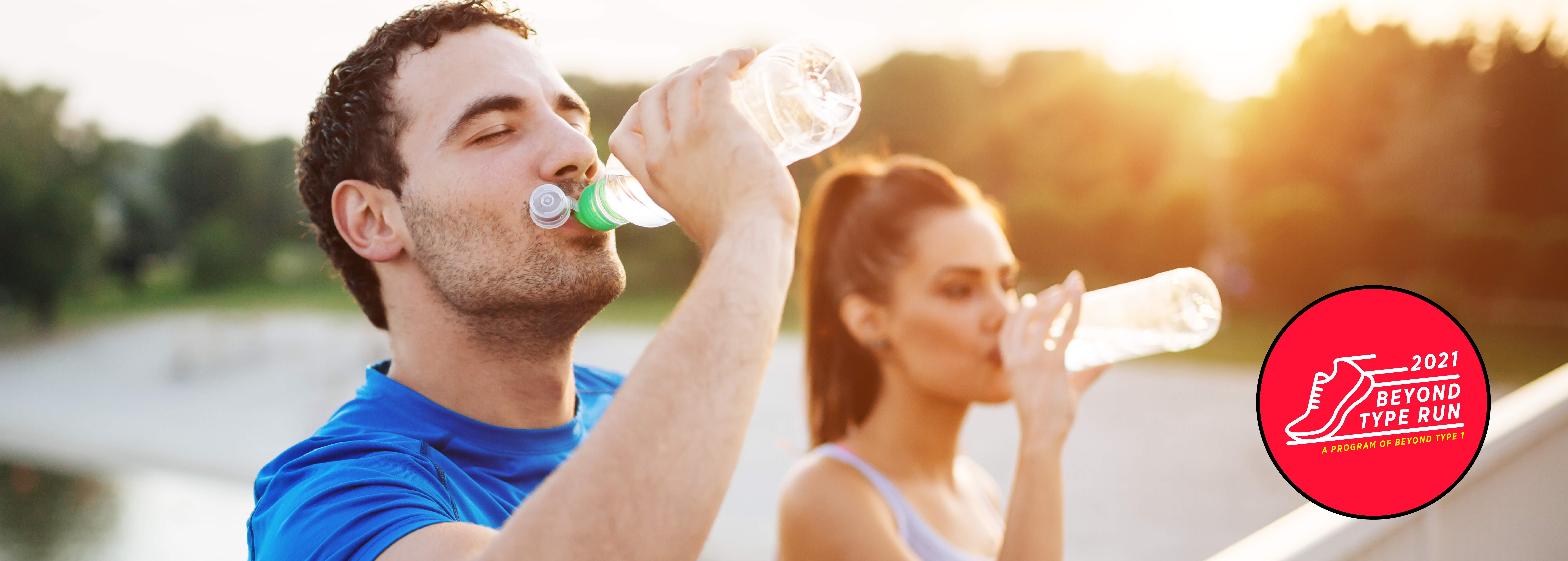How to Adjust Your Insulin Rates for Endurance Training
Written by: Ginger Vieira
4 minute read
November 30, 2021
Whether you’re running 3 miles or 13, learning how—and when—to adjust your insulin rates for endurance training is a critical if you live with type 1 diabetes.
Training for any type of endurance sport—including running, cycling, swimming or hiking—comes with a variety of factors that impact your diabetes management a bit differently than the average jog or power-walk.
Here, we’ll discuss how to adjust your insulin rates for endurance training.
As always, first speak with your healthcare provider before making any changes to your diabetes-care routine.
When Exercising, When Might You See Changes in Your Sensitivity to Insulin?
“When you first begin any type of new exercise or training program, your sensitivity to insulin typically increases throughout the first two to four weeks,” explains Matt Schoenherr, CDCES, and exercise physiologist who’s lived with type 1 diabetes (T1D) for nearly 30 years.
Schoenherr emphasizes, however, that increased sensitivity to insulin isn’t always sustained.
“Don’t be surprised if your insulin requires drift back to pre-training levels,” he says. “While preparing for something like a marathon, your insulin sensitivity may actually wax and wane throughout a training cycle.”
Schoenherr says you are likely to be most sensitive to insulin (and need a decrease in your doses) during:
- The first month
- The first two weeks of a new training phase (adding intervals, distance, etc.)
- During the tapering phase
- During a recovery week
And you may see your insulin needs increase during:
- The “back half” of your training phase, when you’re most fatigued
- Cumulative fatigue (exhaustion) = stress and stress = insulin resistance
Just How Much Will Your Insulin Needs Change During Endurance Training?
While every person’s insulin needs are different, research on reducing basal/background insulin throughout endurance training offers some general expectations.
One factor to keep in mind is how active you were prior to training for a marathon or other endurance events.
If you were an avid exerciser before, the change you’ll see in your insulin doses will likely be a bit less compared to someone who wasn’t regularly active until they began training.
Basal/Background Insulin
Throughout your marathon training—and on the day of a competitive-endurance event—you can expect to see your basal/background insulin needs decrease by anywhere from 10 to 25 percent.
- For example: If you used 25 total units of insulin per day for your basal/background needs before you began training for a marathon, it could decrease by 3.75 to 6.25 units over the course of your training.
- In an insulin pump: When making changes to your basal rates, work closely with your healthcare team to determine if all of your basal rates should be adjusted or just certain parts of the day.
Keep in mind that you’ll likely need to set your reduced basal rate at least an hour before your run in order to reduce the amount of insulin on board when you start running.
Bolus/Mealtime Insulin
When it comes to your meal-time insulin doses, the biggest change you can expect to see is in how you dose for the meals you eat in the hours after training.
Insulin sensitivity can be especially heightened in this window! You may need anywhere from 25 to 50 percent less insulin for meals after a training session.
This increased sensitivity to insulin after exercise can persist for hours, and taking notes to pinpoint how it affects your body is critical.
Correction Doses
Correcting high blood sugars before, during and after training sessions should be done with great caution.
Remember that the exercise is going to hugely amplify the impact of your correction dose on your blood sugar. Most likely, your correction doses right before, during and immediately after training will need to be reduced by anywhere from 50 to 75 percent.
During Endurance Training, What Are Some Possible Long-term Changes In Your Insulin Needs
If your training leads to notable changes in your physique—like increased muscle or loss of body fat—you may see more long-term changes in your insulin needs.
On the flip-side, endurance training also usually means you’re eating more calories in order to fuel your training and recovery.
More calories can mean more insulin, both for meals and basal/background doses because your body will be working harder to keep your glycogen stores (stored sugar in your muscles and liver) full.
If you’re demanding more from your body through endurance training, it makes sense that you may also need more insulin. Needing more insulin is not necessarily a bad thing, as insulin is a powerful hormone that enables your body to use the sugar in your bloodstream for fuel.
What matters most is figuring out how much insulin your body needs to stay in your goal blood-sugar range matters most.
Take Time to Fine-tune Your Insulin Doses
“When you’re doing any type of sport or exercise with diabetes, part of the process is figuring out your body’s insulin needs,” encourages Schoenherr. “Yes, there may be training sessions that are cut short because of low blood sugars—it’s going to happen. But your safety is key, so it’s important to go back and review what you did, to learn why and how to prevent it during your next training session.”
Schoenherr says around every training session it is especially important to take good notes on:
- What you ate
- Insulin doses
- Timing
The more details you track, the more you can determine how to adjust your insulin rates to help you complete your endurance training—with the fewest fluctuations in your blood sugar.
“You should definitely practice fueling with food and drinks during your training, too, just like you would during the actual event,” reminds Schoenherr.
There is No “One-Size-Fits-All” in Type 1 Diabetes
“Experimentation, record keeping and trial and error are key,” says Jacob Seltzer who worked with Integrated Diabetes Services to help him learn how to adjust his own insulin doses throughout his first marathon training experience.
Throughout the process, ask your endocrinologist and diabetes educators for help. Most likely, you aren’t the first endurance athlete with type 1 diabetes who they’ve encountered.
Work closely with your healthcare team when making gradual changes to your insulin doses—everyone’s body is different!
Related Resources

This content was created as a part of a paid partnership with Ultima Replenisher, an...
Read more

Training for a marathon or a triathlon as a person with type 1 diabetes comes...
Read more

Exercising as a person with type 1 or type 2 diabetes who takes insulin can...
Read more


